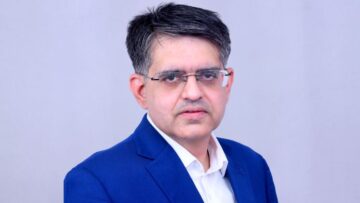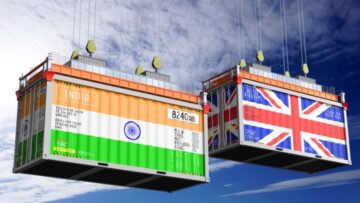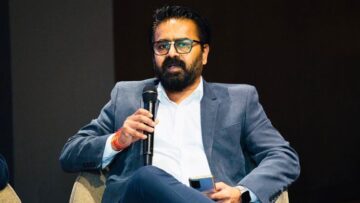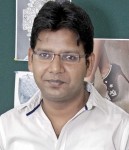
Ravi Gupta of Moonstitch
The former India chief of Louis Vuitton, Regis Fournier, is setting up a manufacturing facility in the country to supply to the world’s top luxury labels. “They will all come here,” he believes. That is why his firm La Compagnie (meaning ‘The Company’ in French) plans to invest Rs. 350 crore in a facility in Pondicherry, to initially make shoe uppers for luxury footwear brands and subsequently produce 100% India-made high-end bags, clutches and clothes for the global market. Interestingly, Fournier is not alone, as across India a clutch of businessmen are retooling their businesses to supply to global high-end brands such as Armani, Polo Ralph Lauren, Fendi, Hermes, Versace, Dior, LV, Gucci and Bottega Veneta, among others. It is estimated that the manufacturing of luxury items in India can grow to US $ 5 billion in near future. Team Apparel Online talks to a hand full of these manufacturers and discovers the essence of working for such a niche value-added market.
In India the term ‘high-end’ has been often used loosely to advocate market for value-added products, but in reality most of the garments going from the country have some value-added element even if going for the mass market. Yet, in the general classification as understood by the industry the so-called ‘high-end’ market is divided into three sub-divisions – high-end buyers, offering FOBs of US $ 20 to US $ 60 for a product; niche buyers, offering FOBs from US $ 60 to US $ 100; and finally the couture buyers, with FOBs above US $ 100. Each buyer, is unique and has very customized requirements and working style. Most of the exporters catering to this segment are tactfully balancing all three segments to get value from their manufacturing setup.
While a fairly large number of exporters are working in the ‘high-end’ segment, the number of buyers too is much larger. “Now almost every brand and retailer is maintaining a ‘high-end’ segment to ensure that their core customers do not drift to other stores for their ‘better product’ needs,” says Vidhur Nath, Director, Nath Brothers, one of the oldest and most organized players in the high-end segment. The focus on high-end is complimented by the vertical strength of the company from weaving innovative fabrics for small quantity orders to a top of the line processing unit to dye all fabrics, trims and accessories that are used in a garment for quality and perfectly matching colours. “The processing unit is our latest addition to ensure a complete package for the high-end buyer. Since we have always worked in the high-end segment, we are perhaps the only company working on assembly line in small orders while also having integrated facilities for in-house production,” avers Vidhur.

Vidhur Nath, Director, Nath Brothers
Though Mumbai is considered the hub for couture products with about 12-15 companies involved in such operations, Delhi-NCR is fast developing as the base of ‘high-value’ and niche products with some young designers venturing into the couture category. In fact, the traditional players, Mumbai enjoys a good reputation on quality of work and many designers from the west are looking for tie-ups to manufacture in the country. One such 50:50 joint venture is between Mumbai-based Malhar Fashions and Gianel SRL Italy. The venture – Innovation Clothing manufactures high-end ladies wear for brands in Italy. “Gianel has been buying from India for its customers in Italy like Armani, Jean Paul Gaultier, Miss Sixty, Marlboro, Guess, Replay for the past 15 years, now the potential of manufacturing in the country has led to the JV,” says Nirad Jhaveri, MD, Malhar Fashions. While the Indian partners will handle the operations of the factory, the marketing aspect will be looked after by Gianel from their office in Rome. The JV is looking to produce garments for brands like Trussardi, Alberta Ferreti, Armani, Miss Sixty, Gas, and Dolce Gabbana with an average FOB of around Euro 15. Interestingly, Italian companies already have a major presence in India with strategic tie-ups in textiles, now they are looking to strengthen their high-end product hold by entering into tie-ups in the garmenting segment.
While tie-ups like the above are looking at complete garments, in general what are being made in India for couture are embroidered panels. “Why would the Italians let go of the ‘Made in Italy’ advantage,” argues Ashish Chadha, Director, Apt Design, which in the last three years since its inception has bagged some of the best work from top-fashion houses in Italy. Ravi Gupta of Moonstitch, who is also among the new crop of exporters aiming for and successfully feeding the couture market feels that India has the technique and skills to manufacture for the luxury market though the segment is still only looking at value additions. “As of now even the products which many claim are being made in India are basically embroidered in the country given a temporary stitching and then sent to be finally stitched in Italy or France for a ‘Made in Italy/France’ label, which adds value to the price ticket.”
Currently, India is the biggest luxury outsourcing destination after China. Several luxury goods makers owning brands with histories dating back decades, if not centuries, believe in original craftsmanship and so loathe diluting the geographical quotient in their products. And there is also the perception issue. Irrespective of high-quality products, ‘Made-in-India’ label is still to cut ice with global buyers. Many of the Indian suppliers have strict non-disclosure pacts, which forbid them from revealing names as Western consumers are wary about buying products made in Asia due to poor perception about the quality of products, and labour- or environment-related issues.
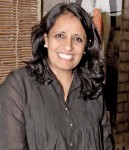
Geeta Govil Sen, Export Manager, Ogaan
That the high-end business is growing is evident in the growing number of exporters looking at the segment as also the increasing number of buyers in the segment coming to India. One of the biggest reasons besides the depth of craftsmanship in India for this segment to grow is the growing confidence in quality. “The quality here is very high and the understanding of the global issues is far better than other countries where prices are competitive,” says Fashion designer Adarsh Gill, who supplies a prêt-a-porter or ready-to-wear range to several luxury brands. Adds Ravi, “When the FOBs are US $ 100 and above, where is the scope for error? We can’t even afford to make extra pieces.” Ravi is doing extensive work for Versace, Dior, LV, Gucci, Rodarte and the likes, besides working for celebrity labels like Victoria Beckham.
It is interesting to learn that one of the biggest reasons that no extra piece can be made is that the inputs, including the fabric at the couture level are supplied by the brand/designer in exact amounts and not even an inch can be made extra. “The game is about exclusivity and if any extra piece is made it can be leaked out so the buyers don’t leave a margin,” says Ravi. However, in the case of celebrity labels or niche brands a few extra pieces are made which are then handed over to the buyer. With quality at a premium each piece is checked at every stage of production and very skilled workers are employed to do the various operations and handwork.
Another fashion designer who has made a mark globally as an exporter is Kavita Bhartia. Using many Indian techniques including block printing, which is done in-house, Ogaan is supplying to a wide range of clients a creative collection of garments from US $ 15 Kaftans/ beachwear to US $ 300 and above dresses. “Being a design house we understand the pulse of fashion and interpret prints and embroidery in contemporary ways to appeal to an international audience. Matching the market segment need, we create products which are high-end and with assured quality right from pieces that are of just US $ 15, how can we treat two garments coming from us differently on quality parameters? What does differ is the fabric, number of techniques used, degree of difficulty in executing the design and of course the brand name attached,” says Geeta Govil Sen, Export Manager, Ogaan.
It goes without saying that as the FOBs increase, the number of pieces decline. Yet, on an average the biggest of orders would not be of more than 1000 pieces, while at the top end even one or two pieces is accepted. “Though our margins are very high in couture, even 100% in some cases, with an average of about 40%, the amount of involvement and follow-up required is also very high, there can be no compromise of any kind. At our factory we have given AC facilities to our karigars so that they do not sweat and are very upfront in keeping the workers satisfied as they are at the base of the pyramid. Even the slightest of mistakes can be very costly,” says Ravi.

Ashish Chadha, Director, Apt Design
While Moonstitch claims to be doing some original designs based on some inspirations sent by its clients, Apt Design says that the client is not looking for concepts, but execution. “Luxury products require a touch of exclusivity and handwork with much detailing and what India has is the skilled manpower for handwork at much more economical prices than in Europe or America. So while the West continues to dominate design creation, India is being looked up to for skilful execution,” says Ashish.
Indeed, Global luxury brands are increasingly taking advantage of India’s human resources available at a more reasonable price. Brands like ‘Louis Vuitton’ and Italian Textile Company ‘Frette’ known for its premium linen are looking at India as a manufacturing base for their products. Such high demands cannot be economically met by mass producing countries like China. Bespoke luxury which is synonymous with Indian luxury makes India well poised to cater to the luxury industry’s requirement. Also India has manufacturing units of different production capacities and can cater economically to large and small consignments alike.
Varanasi’s Welkin Apex produces scarves and stoles that go to stores in the luxury shopping abodes of London’s Regent Street and Champs Elysees in Paris while Gurgaon-based Cuir Inde has been designing and manufacturing home lifestyle products for Armani Casa, Polo Ralph Lauren, Kenzo and Fendi. “We make handloom scarves for Armani which is not possible for them to do in Italy,” says Ravi Agrawal, Proprietor of Welkin Apex. The company started working for the Italian major about three years ago and has seen volumes multiply. “In the garment sector, India is very well equipped to handle requirements of any luxury brand,” Agrawal points out.
An interesting aspect is how these buyers are ‘finding’ the manufacturer and vice versa. While most of them have got business through reliable personal contacts, there are also a growing number of agents and wholesalers who are driving the business for clients in the ‘niche’ segment. “There are many small stores and boutiques in the west that need high fashion and by themselves they are not in a position to outsource, so they are buying through wholesalers who can ensure exclusivity as also very small quantities,” says Vidhur. As more manufacturers vive for business in the segment, buyers are now getting more options, though most of the couture brands prefer to work with only one company for secrecy purpose.
The business being a much personalised one, the involvement of the owners is very high. “I cannot afford to leave the work on anyone, however trained, each sample has to be cleared by me, the stakes are too high,” admits Ashish. Doing 60% business from exports of high-end products, Ogaan is outsourcing its stitching requirements from dedicated fabricators for the lower-high-end market, while the couture line is made in-house. “We cannot trust anyone with the couture line, but for the other products we don’t have the manufacturing skills or competence to manufacture bigger orders, so we leave it those who have the wherewithal to give good quality sewing,” says Geeta. The company tried in-house stitching, but admitted that it was another ball game and are now operating like a design house.
The secret of success in the high-end is the ability to deliver quality and creativity to the buyers’ satisfaction in order sizes that are unattainable by regular exporters. Building individual strengths that set them apart from others in the market only helps in attracting the buyers, but what retains them is the consistency in delivering excellence order after order. ‘Right from a product development team to the final finish, each chain must be attuned to what is being made and why it is important to ensure low rejections,” says Vidhur. Despite working on assembly line, Vidhur claims less than 1% rejection as the systems are well defined and any one worker moving out of the system does not disturb the line.
Every company has its unique way of working, but all are confident that ‘high-end’ is certainly a growth drive for garment and accessory business from India and the tide has only began.



